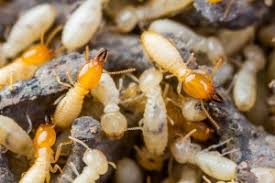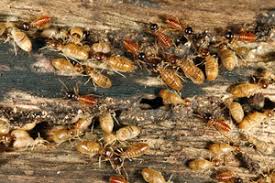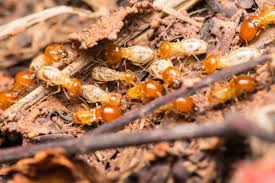The 6-Second Trick For Termite Control Organic
Termites can distinguish nestmates and non-nestmates through chemical communication and gut symbionts: chemicals consisting of hydrocarbons discharged from the cuticle allow the recognition of alien species.148149 Every colony has its own distinct odour. This odour is a result of genetic and environmental elements like the termites' diet and the composition of the bacteria within the termites' intestines.150.
Termites rely on alert communication to defend a colony.134 Alarm pheromones can be released when the nest has been breached or is being attacked by enemies or potential pathogens. Termites always avoid nestmates infected with Metarhizium anisopliae spores, through vibrational signals released by infected nestmates.151 Additional methods of defence include intense jerking and secretion of fluids in the frontal gland and defecating faeces containing alarm pheromones.134152.

To termites, any breach of the tunnels or nests is a cause for alarm. When termites discover a potential violation, the soldiers normally bang their heads, apparently to attract other soldiers for defence and to recruit additional employees to repair any breach.56 Additionally, an alarmed termite bumps into other termites which induces them to become alerted and to leave pheromone trails to the distressed area, which can be a means to recruit additional workers.56.
About Termite Control Organic
The pantropical subfamily Nasutitermitinae includes a specialised caste of soldiers, known as nasutes, that have the capability to exude noxious liquids through a horn-like frontal projection they utilize for defence.155 Nasutes have lost their mandibles throughout the plan of evolution and have to be fed by employees.59 A vast array of monoterpene hydrocarbon solvents have been identified in the liquids which nasutes secrete.156 Likewise, Formosan subterranean termites have been known to secrete naphthalene to safeguard their nests.157.

When soldiers guarding nest entrances are attacked by intruders, they engage in autothysis, creating a cube that denies entry to any outsider.161.
Employees use several different approaches to deal with their dead, including burying, cannibalism, and avoiding a corpse entirely.162163164 To avoid pathogens, termites occasionally engage in necrophoresis, in which a nestmate conveys a corpse in the colony to eliminate it elsewhere.165 Which strategy is used depends on the nature of this corpse a worker is dealing with (i.e.

The Single Strategy To Use For Termite Control Organic
A species of fungus is known to mimic termite eggs, successfully avoiding its natural predators. These small brown balls, known as"termite balls", rarely kill the eggsand in some cases the workers tend to them.166 This fungus mimics these eggs by producing a cellulose-digesting enzyme known as glucosidases.167 A unique mimicking behaviour exists between different species of Trichopsenius beetles and certain termite species within Reticulitermes.
This chemical mimicry allows the beetles to integrate themselves within the termite colonies.168 The developed appendages on the physogastric abdomen of Austrospirachtha mimetes allows the beetle to mimic a termite worker.169.
Some species of ant have been known to capture termites to use as a brand new food origin later on, rather than killing them. For instance, Formica nigra captures termites, and people who try to escape are instantly captured and driven underground.170 Certain species of ants in the subfamily Ponerinae conduct these raids although other ant species go in alone to steal the Look At This eggs or nymphs.146 Ants such as Megaponera analis assault the outside of mounds and Dorylinae ants assault underground.146171 Despite this, some termites and ants can coexist peacefully.
Some Of Termite Control Orange
54 species of ants are known to inhabit Nasutitermes mounds, both inhabited and abandoned ones.174 One reason many ants live in Nasutitermes mounds is due to the termites' frequent occurrence in their own geographic range; another would be to shield themselves from floods.174175 Iridomyrmex also inhabits termite mounds although see this website no evidence for any kind of relationship (other than a predatory one) is known.116 In rare situations, certain species of termites reside inside busy ant colonies.176 Some invertebrate organisms such as beetles, caterpillars, flies and millipedes are termitophiles and reside inside termite colonies (they are unable to survive independently).56 As a consequence, certain beetles and flies have evolved with their hosts.